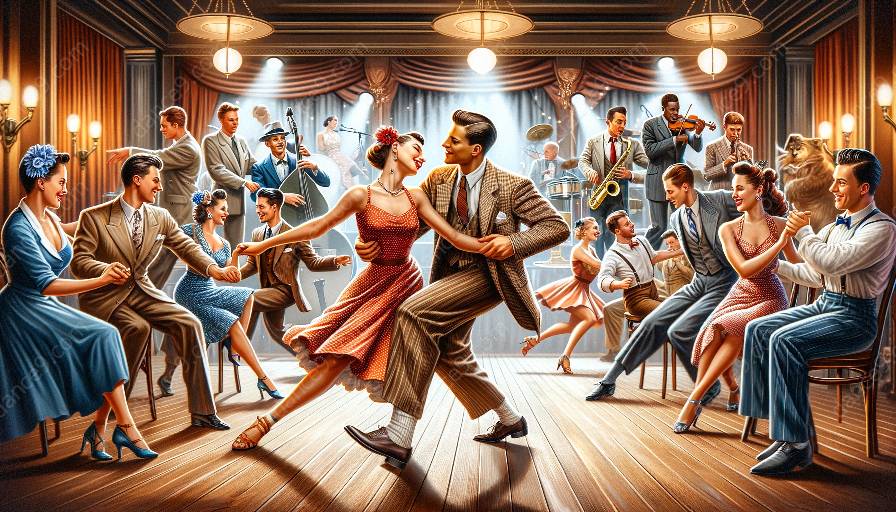Swing dance is a lively and energetic form of partner dance that emerged in the 1920s. It encompasses a variety of styles, including Lindy Hop, Charleston, and Balboa. Central to the charm and spontaneity of swing dance routines is the element of improvisation. Here, we will explore the crucial role that improvisation plays in swing dance routines and its impact on dance classes.
The History of Swing Dance
Before delving into the role of improvisation, it's essential to understand the history of swing dance. Originating in African American communities, swing dance gained popularity in the jazz era, characterized by its syncopated rhythms. The social and cultural influences of the time shaped swing dance into a vibrant and inclusive form of expression.
The Art of Improvisation
Improvisation lies at the heart of swing dance routines, offering dancers the freedom to express themselves spontaneously. Unlike choreographed routines, improvisation allows dancers to interpret the music and respond to their partner's movements in real time. This fluidity and adaptability are essential elements that distinguish swing dance from other dance styles.
Enhancing Creativity and Connection
By incorporating improvisation into swing dance routines, dancers can unleash their creativity and individuality. The organic interplay between partners fosters a sense of connection and communication, as each movement becomes a conversation set to music. This not only creates a captivating performance but also cultivates a strong sense of unity and collaboration among dancers.
Spontaneity and Joy
Improv allows for moments of surprise and delight, infusing swing dance routines with an infectious sense of joy. Dancers revel in the unpredictability of the dance, embracing the exhilarating challenge of co-creating movements on the spot. This element of spontaneity adds depth and authenticity to the performance, captivating audiences and creating memorable experiences.
Role of Improvisation in Dance Classes
Integrating improvisation into dance classes is crucial for nurturing dancers' adaptability and musicality. By teaching students to respond intuitively to the music and to each other, instructors can instill the essential skills of listening, leading, and following. This not only enhances dancers' proficiency in swing dance but also equips them with a versatile foundation for exploring other dance forms.
The Essence of Swing Dance
Ultimately, the role of improvisation in swing dance routines encapsulates the spirit and essence of the dance itself. It embodies the celebration of individual expression, the joy of spontaneous connection, and the timeless appeal of swing dance. Through improvisation, dancers breathe life into each performance, ensuring that no two routines are ever the same, making each dance a unique and unforgettable experience.













































































